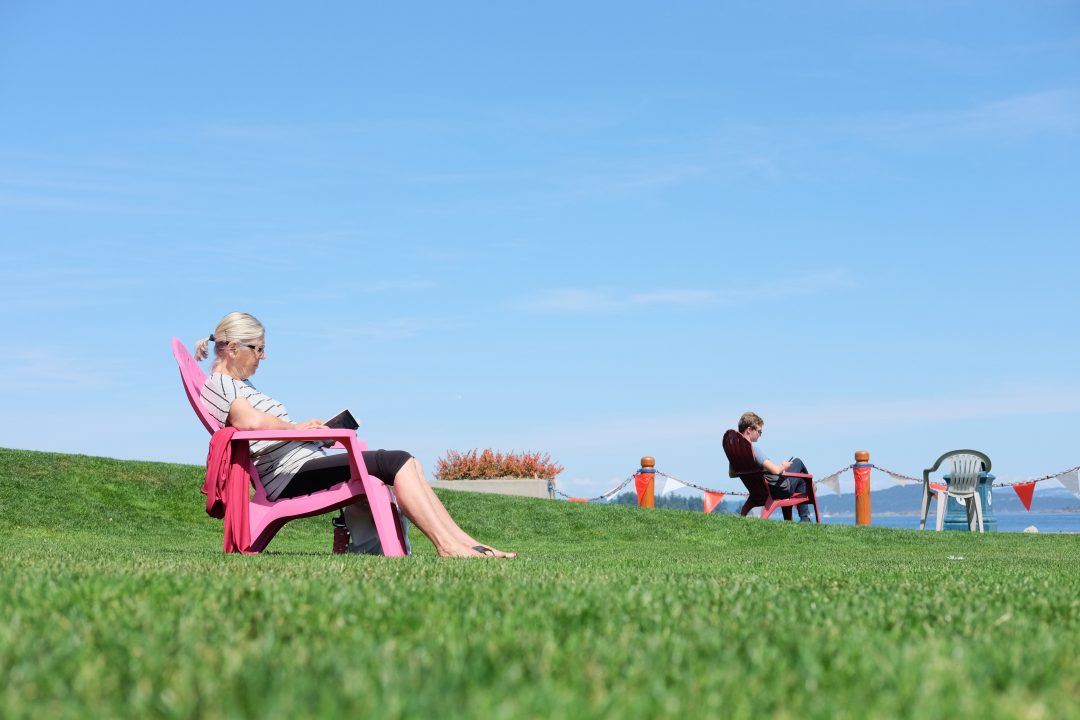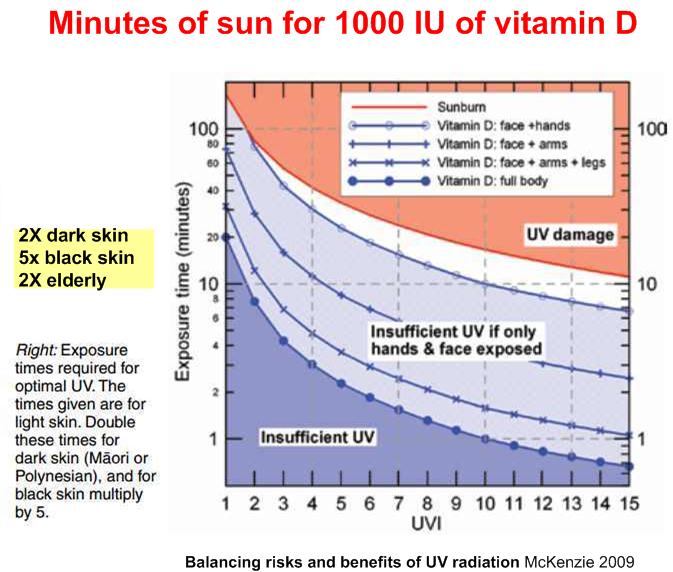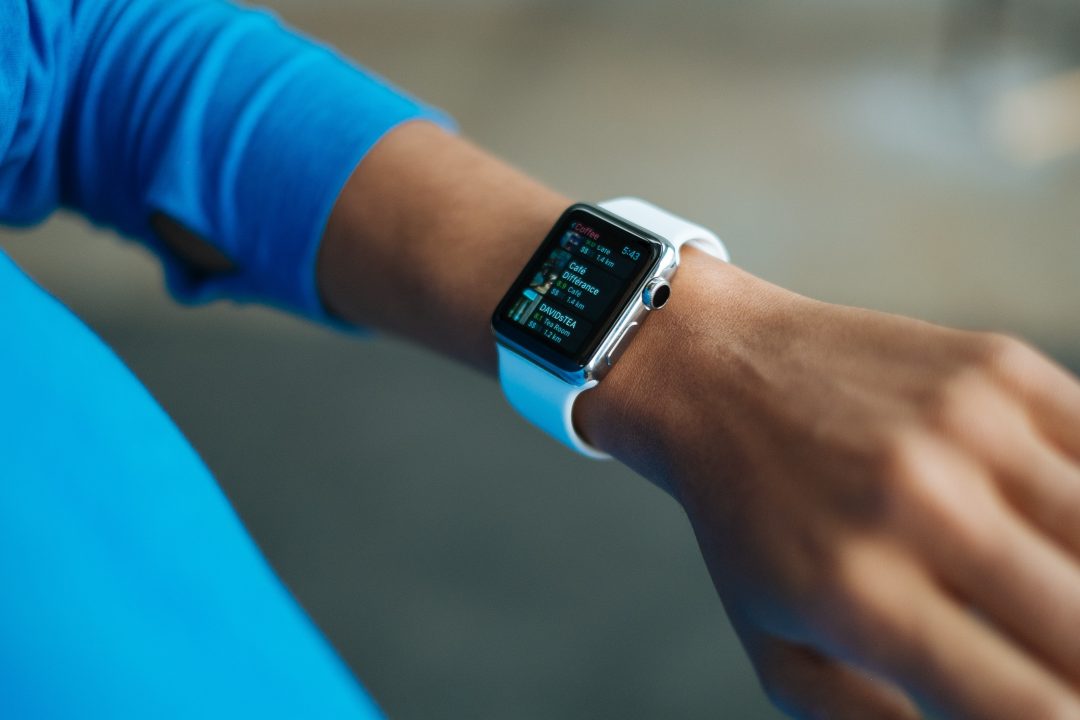From cultural stigma and public health scares to minimum daily recommendations. Who can be sure of what is the right amount of sunlight we need to be exposed to on a daily basis. More so, is there any credence at all to the sunlight and vitamin-D connection?
Not only humans like to chill in the shade on a sunny hot summer day. Even lions take to the shade in order not to get baked. On the opposite side of that coin, there is the human population of the Nordic countries who seem to position themselves and any available skin towards the sun during a chilly but sunny pre-spring day. In fact, sunbathing is a ritual that is found among many animals across all continents. Some do it to warm up after a winter hibernation while others seem to draw pure pleasure from it all year long.“Modern humans have gone from being 24/7 outdoor survivalist to almost constant concrete cave dwellers.”A lot of the species on this planet have some kind of direct dependence on the sun. Plants produce their necessary carbon-based sugar from photosynthesis and day time active animals need it to see possible food sources or visually detect enemies. But it is not entirely necessary for life on this planet. There are extremophiles in darkest isolated cave systems and at the bottom of planet earth’s deepest oceans. These live and thrive very well without any sunlight. Humans fall into the first category of living things. The ones that are dependent on the sun. But some important question remains. How much of this sun do we need and why. Ever since we started to dwell in caves we have shielded ourselves from solar radiation. Sometimes to such an extent that it has had an impact on our physiology, that entailed more than not getting sun scorched or lower one’s body temperature under the shade of a tree. The duration of this cave dwelling has been taken to its maximum as some of us spend more and more time out of the sun in radiation shielding concrete structures we call buildings. Modern humans have gone from being 24/7 outdoor survivalist to almost constant concrete cave dwellers. With such a major change in our behavior and exposure to sunlight, there are most certainly some consequences for our bodies as well.
“factors such as genetics, geographical location and time of sunlight exposure, either increases or decreases the risk of developing the disease”Intuitively, from such a perspective, spending as much time as possible outdoors should be most beneficial for human wellbeing. Or should it? From time to time mass media blast out claims that sunlight exposure is linked to skin cancer. Other times it praises how good it is for our well being and the bodies own capability to create vitamin-D. What should be believed then?
 Well, it seems to be both, but it is still not as black and white as a short tabloid header might imply.
To shed some light on the sunlight causes skin cancer claim, one truth of that matter is that modern human migratory patterns might be a factor that plays a heavy roll. As fair-skinned people from sun scarce places as the British islands migrated to Australia, which is definitely a more sunnier part of the planet. They exposed themselves in turn to a higher risk of getting skin cancer [1] [2]. On top of that Australia is a place that is positioned relatively close under an ozone thinner area of the earth’s atmosphere. Ozone is a gas that is found in the atmosphere that shields all earthlings to some extent from the harmful UV-radiation of the sun. This harmful UV-radiation seems to be effecting fair skin more negatively than darker tones of skin [3].
The points to take home from this previous paragraph are that sunlight might be the cause for some forms of skin cancer, however factors such as genetics, geographical location and time of sunlight exposure, either increases or decreases the risk of developing the disease.
But what about those claims about how healthy sunlight is for us? Is there any truth to that?
Well, it seems to be both, but it is still not as black and white as a short tabloid header might imply.
To shed some light on the sunlight causes skin cancer claim, one truth of that matter is that modern human migratory patterns might be a factor that plays a heavy roll. As fair-skinned people from sun scarce places as the British islands migrated to Australia, which is definitely a more sunnier part of the planet. They exposed themselves in turn to a higher risk of getting skin cancer [1] [2]. On top of that Australia is a place that is positioned relatively close under an ozone thinner area of the earth’s atmosphere. Ozone is a gas that is found in the atmosphere that shields all earthlings to some extent from the harmful UV-radiation of the sun. This harmful UV-radiation seems to be effecting fair skin more negatively than darker tones of skin [3].
The points to take home from this previous paragraph are that sunlight might be the cause for some forms of skin cancer, however factors such as genetics, geographical location and time of sunlight exposure, either increases or decreases the risk of developing the disease.
But what about those claims about how healthy sunlight is for us? Is there any truth to that?
“There seems to be a link between Chronic Kidney Disease (CKD) and vitamin-D deficiency”For example, through science, we know that the human skin has an ability to create a bioactive form of vitamin D called calcitriol [4]. This is done by us eating foods that contain a cholesterol that is a pre-stage to vitamin D, which later appears in the skin as 7-dehydrocholesterol (7-DHC). This 7-DHC is transformed by the sunlights UVB radiation into pre-vitamin D. Then this pre-vitamin-D is transformed into vitamin-D3. Lastly, through some reactions that take place in the liver and kidneys, this vitamin D3 is transformed into the bioactive 1,25-dihydroxy-vitamin-D3. But if people are not getting enough sunlight they better make sure they get your adequate levels through foods like mushrooms or even through supplementation if there is an occurring deficiency. But ok, our bodies can produce vitamin-D with sunlight. So what? How is that healthy, some might ask? What is so good about vitamin-D that we might get from sunlight? Just to name a few good things, is that it helps us fight off infection [5] and retain strong and healthy bones [6]. But that is not all. As mentioned the liver and kidneys are involved in this sunlight induced vitamin-D production. Could there also be a positive effect on these organs from the sun? There seems to be a link between Chronic Kidney Disease (CKD) and vitamin-D deficiency [7]. Something that implies that having healthy kidneys is linked to getting enough sunlight on a daily basis. Likewise, there are indications according to scientific literature that the development or worsening of different kinds of liver disease increases not only from vitamin-D deficiency but also from a reduction in sunlight exposure [8]
“having enough vitamin-D in your body can reduce the symptoms of fatigue and winter blues”So, it is relatively easy to say that sunlight is good for us. Yet, depending on where we live and what skin type we carry we should take that into account while spending a certain amount of time outdoors on a sunny day. But the tale of sunlight does not end here. There seems to be another wrinkle to the story of how our wellbeing is related to sunlight. There appears to be an increase of complaints of seasonal based lethargy and feeling down the further away from the equator people live. The same thing seems to increase with the advancement of the winter season on both hemispheres of the earth. What is referred to here, is Seasonal Affective Disorder (SAD) or more commonly known as the winter blues. Something that hit many of us every year and is coinciding with that season and its shorter daylight duration.
 The take away points here, that is supported by science, tells us that having enough vitamin-D in your body can reduce the symptoms of fatigue [8] and winter blues [9] or some forms of non-seasonal depression. As sunlight is more scarce during those winter months, and lower temperatures are un-inviting for outdoor activities, vitamin-D supplementation or an increase of mushroom consumption can be considered as an easy patch for those symptoms [10].
The take away points here, that is supported by science, tells us that having enough vitamin-D in your body can reduce the symptoms of fatigue [8] and winter blues [9] or some forms of non-seasonal depression. As sunlight is more scarce during those winter months, and lower temperatures are un-inviting for outdoor activities, vitamin-D supplementation or an increase of mushroom consumption can be considered as an easy patch for those symptoms [10].
“If your skin gets burnt or gets red,… you have surpassed your healthy daily dose”Now, one might argue in contrast to what was mentioned about native western Europeans and the risk of skin cancer they are exposed to in certain geographical zones. That people with browner tones of skin, who have generationally been linked to more sunny regions like the Mediterranean, Asia or Africa, have skin cancer proofed themselves when they have moved to places where at least seasonally there is limited sunlight. But in opposite, they have now exposed themselves to the risk of getting low on vitamin-D. That would make them stand at a higher risk of getting depressed, due to a higher concentration of skin pigment protecting them from skin UV-penetration that is needed for vitamin-D production. In fact, there are science-based indications of this in the case of vitamin-D deficiency [11] [12] [13]. So it is even more important for those groups of the human population who have darker skin tones and reside in areas ever closer to the poles, to take preventative measures against vitamin-D deficiency-induced depression and lethargy [14] [15].
“a smart device assists the wearer by tailoring the time needed outdoors for vitamin-D production from the sun”Then, the following question on most of our minds is, how much sunlight should we be getting or how much time should we spend outdoors on a daily basis to stay safe? Well, on a sunny day the maximum time can easily be controlled by how your skin reacts. If your skin gets burnt or gets red, so-called Erythema, you have surpassed your healthy daily dose and you are actually damaging your skin, which in turn can cause DNA damage to those skin cells [16] [17].
Trippy Artists We Like
A good informative report that was published in the Journal of the American Academy of Dermatology on some guidelines for knowing your limit according to how your skin reacts is Skin type, minimal erythema dose (MED), and sunlight acclimatization [18]. It is not complete in any sense, but it is a good start to get you inside of the ballpark. To further the accuracy of what our healthy dose of daily sunlight is, we could turn to technologies such as the QSun UV Tracker & Vitamin D intake monitor. This UV-detector, coupled with a smart device assists the wearer by tailoring the time needed outdoors for vitamin-D production from the sun while preventing overexposure. Based on the skin type, notifications are sent to the smart device, alerting the wearer when sunburn is about to occur. On top of that, the wearer can find out how much vitamin-D they have produced and how much they would need from food intake. As an alternative to the techy solution, there is a more easy way to find out the minimum time of sunlight for humans to produce a recommended daily needed dose of 1000μg of vitamin-D [19]. This is to follow charts and graphs published by national health boards or dermatological institutes. The one bellow is a good example of that, where the UVI bottom part of the graph is related to the UV Index scale which is within the international guidelines for UVI established by the World Health Organization.
 All of the above mentioned is to one extent or another known generally by the public and this is usually the sum of information that is being mainly provided. Still, that does not mean that it is the whole story of the connection between sunlight and wellness.
All of the above mentioned is to one extent or another known generally by the public and this is usually the sum of information that is being mainly provided. Still, that does not mean that it is the whole story of the connection between sunlight and wellness.
“parts of the brain could be directly sensitive to sunlight”One discovery made in 1999, tells us that the brain has photoreceptor-proteins similar to those found in human eyes [20]. That could mean that parts of the brain could be directly sensitive to sunlight as well, causing a reaction of some sort. In fact, that is a hypothesis that has been supported by some research, mainly performed on mice [21] [22] [23]. Nonetheless, as the research may imply, is that not only the skin and eyes and their light sensitivity may regulate our wellness. Also, other parts such as the brain, directly stimulated by sunlight through the skull, could hypothetically influence both our physical and mental wellbeing. Who knows what other organs might be directly stimulated by solar or cosmic radiation for our benefit. All in all, what can be said conclusively is that spending some time out of our concrete caves on a daily basis is good for us and that it can raise our vitamin-D levels as well. Now, to be able to do that safely we need to inform ourselves about the specific sunlight conditions that reign in the particular geographical region we reside in and what durations are recommended for every skin type. References [1] – US Department of Health and Human Services. The Surgeon General’s call to action to prevent skin cancer. Washington, DC: US Department of Health and Human Services, Office of the Surgeon General; 2014. [2] – Watson, M., Holman, D. M., & Maguire-Eisen, M. (2016). Ultraviolet Radiation Exposure and Its Impact on Skin Cancer Risk. Seminars in oncology nursing, 32(3), 241-54. [3] – Gilchrest B, Eller M, Geller AC, Yaar M. The pathogenesis of melanoma induced by ultraviolet radiation. N Engl J Med. 1999;340:1341–1348. [4] – G. Haddad, John & Hahn, Theodore. (1973). Natural and Synthetic Sources of Circulating 25-Hydroxyvitamin D in Man. Nature. 244. 515-7. 10.1038/244515a0. [5] – Schwalfenberg, G. (2011). A review of the critical role of vitamin D in the functioning of the immune system and the clinical implications of vitamin D deficiency.. Mol Nutr Food Res. Weinheim: WILEY-VCH Verlag GmbH & Co. KGaA. [6] – Bener A, Saleh NM. Low vitamin D, and bone mineral density with depressive symptoms burden in menopausal and postmenopausal women. J Mid-life Health [serial online] 2015 [cited 2019 Mar 15];6:108-14. [7] – Chau, Y. Y., & Kumar, J. (2012). Vitamin D in chronic kidney disease. Indian journal of pediatrics, 79(8), 1062-8. [8] – Hoan, N. X., Tong, H. V., Song, L. H., Meyer, C. G., & Velavan, T. P. (2018). Vitamin D deficiency and hepatitis viruses-associated liver diseases: A literature review. World journal of gastroenterology, 24(4), 445-460. [8] – Nguyen, M., Bryant, K., & O’Neill, S. (2018). Vitamin D in SLE: a role in pathogenesis and fatigue? A review of the literature. Lupus, 27(13), 2003–2011. [9] – Drymon Shipowick, Clarissa & Barton Moore, C & Corbett, Cynthia & Bindler, Ruth. (2009). Vitamin D and depressive symptoms in women during the winter: A pilot study. Applied nursing research : ANR. 22. 221-5. 10.1016/j.apnr.2007.08.001. [10] – Cardwell, G., Bornman, J. F., James, A. P., & Black, L. J. (2018). A Review of Mushrooms as a Potential Source of Dietary Vitamin D. Nutrients, 10(10), 1498. doi:10.3390/nu10101498 [11] – Lips, P., & de Jongh, R. T. (2018). Vitamin D deficiency in immigrants. Bone reports, 9, 37-41. doi:10.1016/j.bonr.2018.06.001 [12] – Aucoin, M., Weaver, R., Thomas, R., & Jones, L. (2013). Vitamin D status of refugees arriving in Canada: findings from the Calgary Refugee Health Program. Canadian family physician Medecin de famille canadien, 59(4), e188-94. [13] – Van Der Meer IM, Karamali NS, Boeke AJP, Lips P, Middelkoop BJC, Verhoeven I, et al. High prevalence of vitamin D deficiency in pregnant non-Western women in the Hague, Netherlands. Am J Clin Nutr. 2006;84:350–353. doi: 10.1093/ajcn/84.2.350. [14] – Wicherts, I. S., Boeke, A. J., van der Meer, I. M., van Schoor, N. M., Knol, D. L., & Lips, P. (2010). Sunlight exposure or vitamin D supplementation for vitamin D-deficient non-western immigrants: a randomized clinical trial. Osteoporosis international : a journal established as result of cooperation between the European Foundation for Osteoporosis and the National Osteoporosis Foundation of the USA, 22(3), 873-82. [15] – Webb, A. R., Kazantzidis, A., Kift, R. C., Farrar, M. D., Wilkinson, J., & Rhodes, L. E. (2018). Colour Counts: Sunlight and Skin Type as Drivers of Vitamin D Deficiency at UK Latitudes. Nutrients, 10(4), 457. doi:10.3390/nu10040457 [16] – Del Bino, S., Duval, C., & Bernerd, F. (2018). Clinical and Biological Characterization of Skin Pigmentation Diversity and Its Consequences on UV Impact. International journal of molecular sciences, 19(9), 2668. doi:10.3390/ijms19092668 [17] – Gilchrest B.A., Soter N.A., Stoff J.S., Mihm M.C., Jr. The human sunburn reaction: Histologic and biochemical studies. J. Am. Acad. Dermatol. 1981;5:411–422. doi: 10.1016/S0190-9622(81)70103-8. [18] – Sayre, Robert M et al. Skin type, minimal erythema dose (MED), and sunlight acclimatization. Journal of the American Academy of Dermatology , Volume 5 , Issue 4 , 439 – 443 [19] – NHS (2019). Vitamin D. [online] nhs.uk. Available at: https://www.nhs.uk/conditions/vitamins-and-minerals/vitamin-d/ [Accessed 16 Mar. 2019]. [20] – Seth Blackshaw, Solomon H. Snyder. Encephalopsin: A Novel Mammalian Extraretinal Opsin Discretely Localized in the Brain. Journal of Neuroscience 15 May 1999, 19 (10) 3681-3690 [21] – Nissilä, J., Mänttäri, S., Särkioja, T., Tuominen, H., Takala, T., Timonen, M., & Saarela, S. (2012). Encephalopsin (OPN3) protein abundance in the adult mouse brain. Journal of comparative physiology. A, Neuroethology, sensory, neural, and behavioral physiology, 198(11), 833-9. [22] – Antti Flyktman, Satu Mänttäri, Juuso Nissilä, Markku Timonen, Seppo Saarela, Transcranial light affects plasma monoamine levels and expression of brain encephalopsin in the mouse. Journal of Experimental Biology 2015 218: 1521-1526; doi: 10.1242/jeb.111864 [23] – FLYKTMAN, A., JERNFORS, T., MANTTARI, S., NISSILA, J., TIMONEN, M., SAARELA, S.. Transcranial Light Alters Melanopsin and Monoamine Production in Mouse (Mus musculus) Brain. Journal of Neurology Research, North America, 7, may. 2017.





